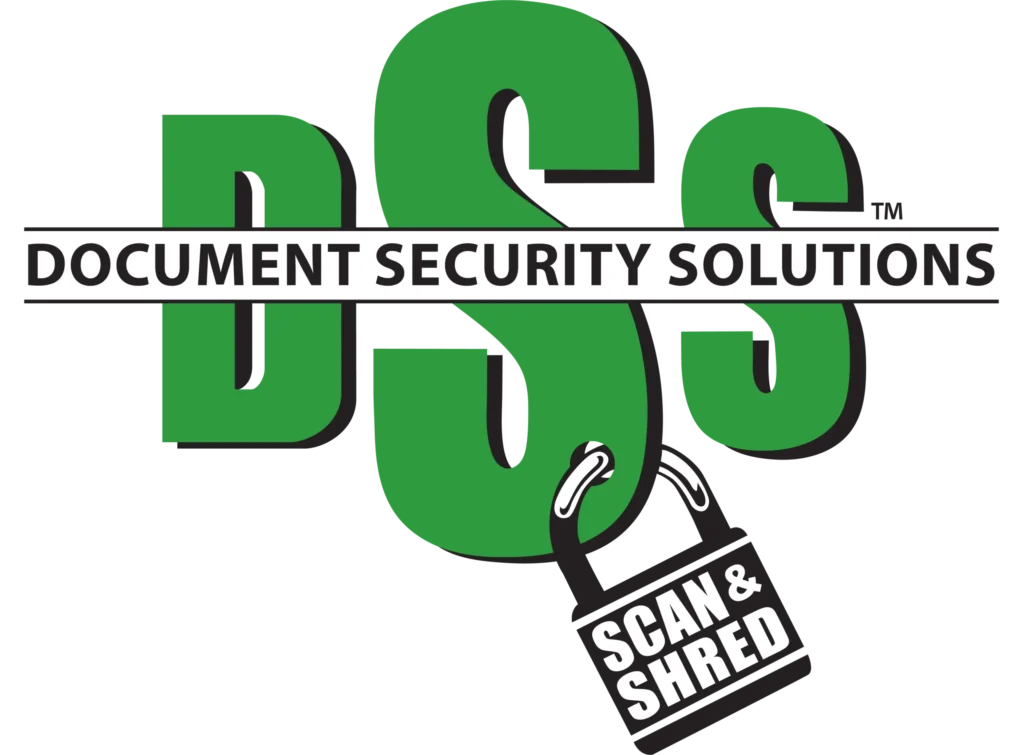You’re skeptical, aren’t you? You’re thinking, “How can document scanning transform my healthcare operations?” Well, hold onto that thought. In this case study, we’ll walk you through how a leading healthcare provider significantly streamlined their operations by adopting a robust document scanning system. You’ll see the immediate and long-term benefits they’ve reaped – it’s an eye-opener you won’t want to miss!
Understanding the Challenges Faced by the Healthcare Provider
You’re about to grasp the challenges that this healthcare provider was dealing with before they opted for document scanning. The provider’s hurdles were multifold, and primarily revolved around the inefficiencies of their paper-based system. Imagine a labyrinth of file cabinets, each drawer brimming with documents containing critical patient information. The sheer volume made locating specific files a laborious task prone to errors.
Perhaps you’re familiar with the digital transition difficulties? Well, this provider grappled with them too. They understood the need for digitization but feared data loss during migration and potential cybersecurity threats post-transition. Moreover, training staff to adapt to new technology seemed daunting.
Disorganized papers also created obstacles in complying with regulations like HIPAA (Health Insurance Portability and Accountability Act). With records scattered across multiple locations, maintaining privacy became an uphill battle. Additionally, disaster recovery planning was nearly impossible due to physical vulnerabilities of paper documents.
The decision to adopt document scanning wasn’t taken lightly; it was born out of necessity – a solution sought after identifying these pressing issues. And so began their journey towards streamlined operations via digitization.
The Need for Streamlined Operations in Healthcare
In today’s fast-paced medical field, there’s an increasing demand for efficiency and smooth workflows. You’re expected to identify operational bottlenecks and resolve them immediately. You’ve likely observed how administrative tasks can slow down your service delivery, affecting patient satisfaction and overall productivity.
The solution? Healthcare digitization. By embracing digital transformation, you can streamline your operations significantly. Imagine replacing physical documents with electronic records; you’d eliminate time-consuming manual data entry, reduce the risk of inaccuracies in patient information, and expedite processes like billing and claims handling.
Moreover, digitization offers a centralized data repository where all necessary information is available at your fingertips. It’d enable better collaboration among different departments in your healthcare facility as everyone would have access to the same up-to-date files.
But remember that successful digitization isn’t about merely scanning documents into digital formats – it involves rethinking existing workflows and implementing new ones that exploit digital capabilities effectively.
What Is Document Scanning and Its Importance
In our next discussion, you’ll gain a deeper understanding of document scanning, a process that converts physical documents into digital format. We’ll delve into the numerous benefits this technology offers, such as improved accessibility, increased efficiency and enhanced security. Particularly in healthcare, we’ll explore how document scanning can revolutionize information management by reducing clutter, speeding up retrieval times and ensuring regulatory compliance.
Understanding Document Scanning
Let’s delve into the concept of document scanning and how it’s revolutionized data management in healthcare. Document scanning is a process that converts physical documents into digital files. It requires specialized equipment, such as high-speed scanners, to capture an image of each page.
Scanning security is paramount during this process. The scanner must protect patient information from unauthorized access or loss while transforming it into a digital format. Digital preservation comes next, involving the storage of these scanned images on secure servers or clouds.
When done correctly, document scanning ensures easy retrieval and longevity of medical records. It also eliminates physical storage needs saving space and cost. In healthcare, it’s key to maintaining accurate and accessible patient histories for improved care delivery.
Benefits of Scanning
You’ll find that transforming physical files into digital formats can significantly reduce your storage costs and improve data accessibility. This transition is achieved through various scanning techniques, each designed to capture different types of documents effectively. Flatbed scanners are perfect for fragile or bound materials, while sheet-fed scanners excel at processing stacks of loose papers.
Digital preservation is another key advantage. Unlike paper copies that deteriorate over time, digital files remain intact indefinitely if properly stored and backed up. It’s also easier to secure sensitive information digitally than physically. For instance, you can restrict access levels, encrypt data or set up automatic backups to lessen risks related to data loss or breaches.
In essence, the benefits of going digital extend beyond cost savings – they enhance efficiency and security too.
Document Scanning in Healthcare
Transitioning to digital records in the medical field isn’t just a modern convenience-it’s a necessity for efficient and secure patient care. This shift is part of the broader digital transformation within healthcare, where document scanning plays a pivotal role.
You start by sorting and prepping physical documents, removing staples or paper clips that could jam the scanner. Then, you feed these papers into specialized scanners which digitize them accurately and quickly. The resulting images are then coded into relevant categories using software algorithms.
But it’s not just about efficiency; it’s also about patient confidentiality. Digital files can be encrypted and protected with access controls, ensuring only authorized personnel can view them-a level of security hard copies simply can’t provide.
The Implementation Process of Document Scanning
Implementing document scanning wasn’t an overnight task; it required careful planning and a well-thought-out strategy. You had to consider scanning technology advancements, understand the integration challenges that might crop up, and devise solutions to overcome them.
Here’s how you approached this complex process:
– First, you assessed your organization’s needs.
– What volume of documents needed scanning?
– Which departments would benefit most from digitization?
– Then, you evaluated various scanning technologies available in the market.
– Which one was compatible with your existing systems?
– Did they offer features like Optical Character Recognition (OCR), which could convert scanned images into editable text?
– Next, you prepared for integration challenges.
– How would digital records integrate with your current Electronic Health Records (EHR) system?
– Did your chosen technology support Health Level Seven International (HL7) standards for data exchange?
– Finally, after selecting a suitable technology, you began gradual implementation.
– Start with one department before expanding across the entire organization.
Immediate Impact of Document Scanning on Operational Efficiency
Once digitization was in full swing, there was a noticeable boost in operational efficiency. You’d seen how the scanning legislation, combined with the paperless transition, had revolutionized your healthcare operations.
Embracing document scanning meant less time wasted on manual file retrieval and organization. Now, you’re dealing with digital files that are easier to search through and manage. Your team’s productivity has skyrocketed since they’re no longer bogged down by paperwork.
The paperless transition also made it simpler to comply with the stringent scanning legislation regarding patient data security. Before, keeping track of numerous physical documents was a nightmare; now, encryption and secure access controls ensure patient information is safe.
Thanks to this process-driven approach, you’ve reduced overhead costs too. Less physical storage space is needed when most of your files are stored digitally. This reduction frees up resources for other critical areas of your operation.
Furthermore, let’s not forget about disaster recovery plans – they’ve become more robust as well. With backups of digital files readily available, you can quickly restore operations after unforeseen events.
In short: Your decision to embrace a paperless transition has boosted efficiency dramatically while ensuring compliance with scanning legislation.
Long-Term Benefits of Document Scanning for the Healthcare Provider
Looking ahead, you’ll find that going paperless doesn’t just offer immediate perks; there are long-term benefits to consider as well. Two significant advantages include security enhancements and cost savings.
– Security Enhancements
– With digital documents, you’ll have the ability to set different levels of access for your staff. This not only ensures privacy but also reduces the chance of important files being misplaced or lost.
– Additionally, backup and recovery processes are simpler with electronic documents. In case of unforeseen circumstances like data loss due to hardware failure, retrieving information becomes hassle-free.
– Cost Savings
– The operational costs associated with paperwork-printing, storing, distributing-are virtually eliminated when you switch to digital documentation.
– Moreover, time is a crucial factor here. By saving on the time spent handling physical documents, your team can focus more on patient care-a direct boost to efficiency and productivity.
Embracing document scanning isn’t merely about streamlining operations in the short run. It’s a strategic move that enhances security while providing significant cost savings-compelling reasons for any healthcare provider to consider this transition carefully.
Lessons Learned and Future Implications for Other Healthcare Providers
Having explored the long-term benefits of document scanning for a leading healthcare provider, let’s now shift our focus to the lessons learned from this digital transformation and their implications on future healthcare trends.
The digital transformation journey isn’t always smooth. You’ll face challenges as you adapt to new technologies and processes. However, with every hurdle comes valuable Digital Transformation Lessons that can guide your future initiatives.
One key lesson here is the importance of thorough training for staff in using new systems. Don’t underestimate its role in ensuring a successful transition. Additionally, regular audits of digitized documents ensure accuracy and reliability of data-a critical factor in healthcare where lives depend on correct information.
Look forward too, as the Future Healthcare Trends are increasingly leaning towards further digitization and automation. Leveraging artificial intelligence (AI) and machine learning can enhance efficiency even more-imagine predictive analytics guiding patient care or AI-enabled chatbots providing instant responses to client queries.
In short, while embarking on your own digital transformation journey remember these lessons: invest time in comprehensive training, perform regular audits for quality assurance, and keep an eye out for upcoming tech trends that could give your organization an edge.
Frequently Asked Questions
What Other Industries Can Benefit From Document Scanning and How?
You’d find document scanning quite beneficial in education and legal sectors. By digitizing books or legal documents, you’re increasing accessibility, improving organization, and enhancing data security. It’s a game changer for efficiency.
How Does Document Scanning Contribute to Environmental Sustainability?
By boosting scanning efficiency, you’re drastically reducing paper use and waste. Imagine a forest’s worth of trees saved! That’s the sustainability impact document scanning offers, contributing significantly to environmental preservation efforts.
Are There Any Potential Security Risks Associated With Document Scanning in Healthcare?
Yes, there can be security risks with document scanning in healthcare. Possible issues include scanning software vulnerabilities and privacy breach concerns if unauthorized individuals access sensitive patient information during the digitization process.
Is There a Cost-Benefit Analysis Available for the Implementation of Document Scanning in Healthcare Operations?
Sure, you’re in luck! There is indeed a cost-benefit analysis available. It outlines the improvements in scanning accuracy and potential implementation challenges, shedding light on the true value of document scanning in healthcare operations.
How Does Document Scanning Impact the Patient Experience in Healthcare?
Document scanning enhances the patient experience in healthcare by improving patient confidentiality and scanning accuracy. It’s quicker, reducing wait times, and more reliable, eliminating errors from manual data entry. Patient records become more secure and accessible.





